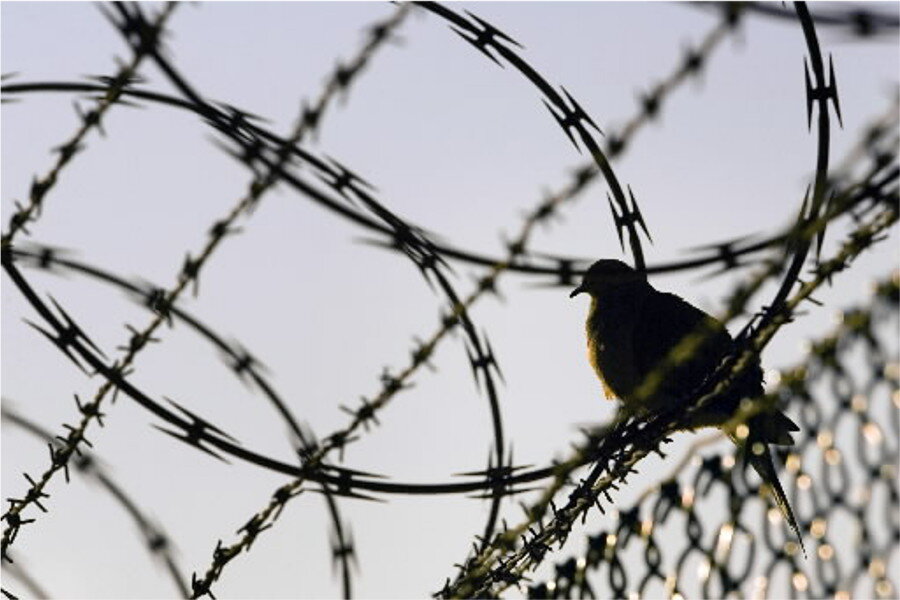Green Guantánamo: From detention center to peace park?
Loading...
From swords to plowshares, and from barbed wire to ... fishing hooks?
Under a new proposal, Guantánamo Bay Naval Base – including the infamous detention center – could be transformed into a marine conservation area and an international peace park after the inmates leave.
The proposal, published Thursday in the journal Science, considers the fate of the base in light of the recent thaw in relations between Cuba and the United States and President Obama’s impending historic visit.
"Now the US embassy in Cuba is open, more business and tourists will be coming, which will place more pressure on coastal systems," says co-author Joe Roman, a conservation biologist at the University of Vermont, in a telephone interview with The Christian Science Monitor.
"What direction will Cuba take? Press ahead with development, or stand by its conservation laws?"
Cuba's extensive environmental laws, known as "Law 81," date back to Fidel Castro's attendance at the 1992 Earth Summit in Rio de Janeiro, where he castigated "consumer societies" for their "atrocious destruction of the environment."
Law 81 and Cuba's isolation from tourism have worked together to preserve Cuba's ecosystem, Dr. Roman tells the Monitor.
Moving forward, Roman sees the Guantánamo land as an opportunity to help steer Cuba’s development toward sustainability, to "move it forward in a way that benefits both the people and the wildlife."
"Cuba has great scientists, but with very limited resources," says Roman. "This is one place we could provide that equipment, working together until the eventual handover back to Cuba; by then, hopefully the benefits of working together would be apparent, and the endeavor could continue."
Their paper goes further, talking of a "Woods Hole of the Caribbean" to reinforce and extend the work of the renowned Woods Hole Oceanographic Institution (WHOI) of Cape Cod, Mass.
But such aspirations are "perhaps optimistic," says WHOI scientist Hauke Kite-Powell in a telephone interview with the Monitor, pointing out that WHOI is home to almost 1,000 people, including students.
"The resources to replicate something like Woods Hole in the Caribbean are not going to be forthcoming anytime soon," says Dr. Kite-Powell. "And building something like Woods Hole from scratch, even if land and funding were available, is a tall order. I’m not sure the authors meant that."
Woods Hole does research with a global reach, and Kite-Powell sees little need for another institute with quite such ambitious goals, but he does see the potential for a facility looking deeply into local concerns, such as Cuba's nearly pristine coral reefs and tropical ecosystems.
And while he agrees this would be a laudable transformation for the base, he notes that excellent research facilities already exist in the Caribbean.
But an ecological research facility is just one aspect of the vision Roman and his co-authors lay out. They also suggest that the base could become a peace park.
Just as the Iron Curtain in Europe provided nature with an unintended respite along that frontier zone, laying the foundation for the European Green Belt, says Roman, so Guantánamo could be a cross-border initiative, bonding two nations in a peaceful purpose.
"If one wanted to support improved relations between the US and Cuba," says Kite-Powell, "beginning with shared scientific endeavors is not a bad place to start, because scientists the world over are inclined to work together across political boundaries anyway."








